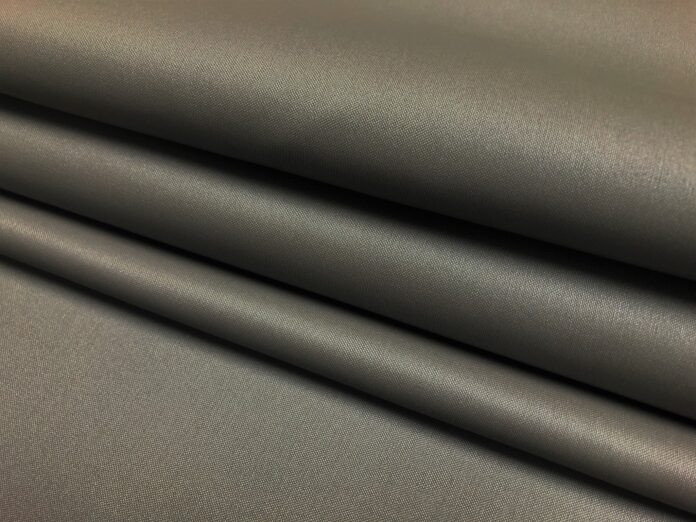
Table of Contents
The aesthetic and functional demands of various indoor and outdoor settings require upholstery materials that are both durable and pleasing to the eye. Marine vinyl and leather, two dominant players in the upholstery game, have long been debated for their respective merits and drawbacks.
So, which one is best for you? This article delves deep into the characteristics of both materials to help you make an informed decision about marine vinyl.
Origins and Composition
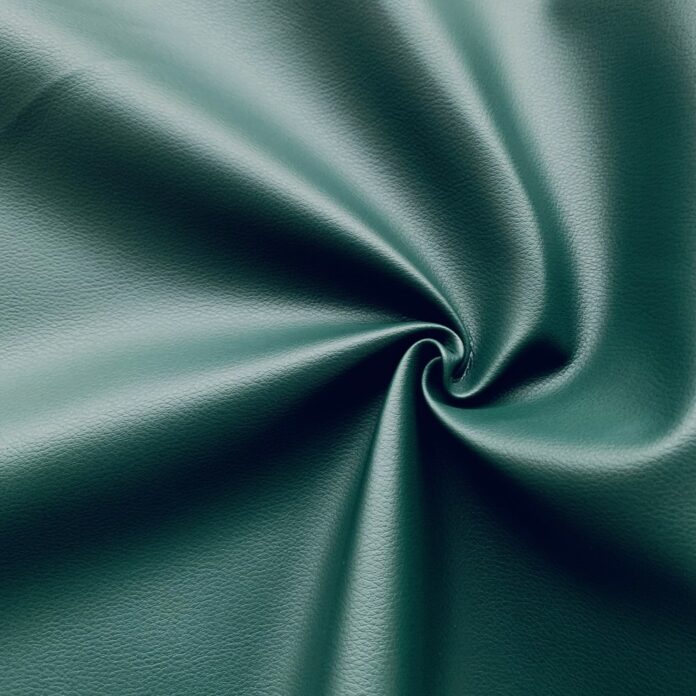
Marine Vinyl: Marine vinyl is a synthetic material, primarily made up of PVC (polyvinyl chloride). It’s designed explicitly to resist environmental adversities, especially those found in marine environments. By infusing specific stabilizers, UV inhibitors, and other additives, marine vinyl boasts a structure that can withstand challenges like humidity, saltwater, and direct sunlight.
Leather: Leather, on the other hand, is a natural product, derived from animal hides – primarily cattle. The skin undergoes a tanning process to prevent decay and then is dyed and treated to achieve the desired texture, color, and finish.
Durability and Maintenance
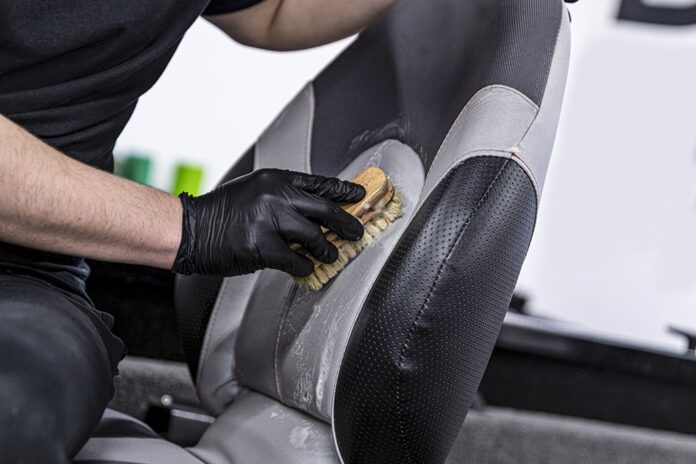
Marine Vinyl:
- Water Resistance: Marine vinyl’s inherent water resistance makes it a champion in settings prone to moisture and spills.
- UV Resistance: Most marine vinyls come with built-in UV resistance, making them fade-resistant under prolonged sun exposure.
- Maintenance: Cleaning is a breeze. A simple wipe-down with a mild soap and water solution will suffice in most cases.
Leather:
- Wear and Tear: Genuine leather, especially high-quality full-grain types, age gracefully and can last for decades. However, it’s vulnerable to scratches.
- Moisture Sensitivity: Leather isn’t the best friend of water. Prolonged exposure can lead to spotting, stiffness, or warping.
- Maintenance: Regular conditioning is required to keep leather soft and supple. Moreover, cleaning requires specific leather-cleaning products.
Comfort and Feel
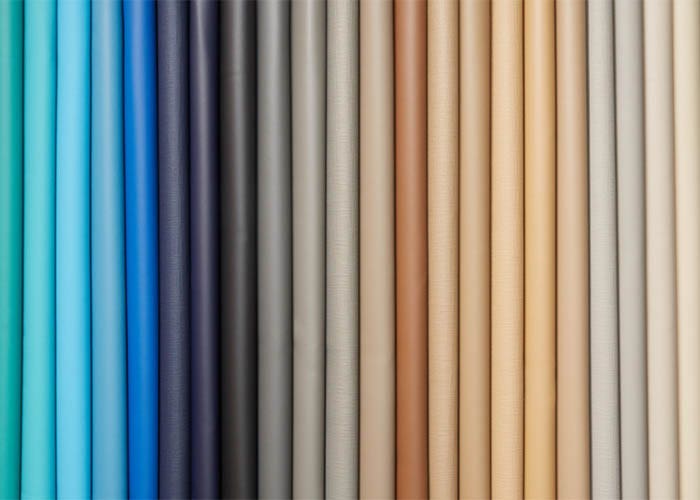
Marine Vinyl: Marine vinyl, being synthetic, doesn’t have the same breathability as leather. This means it might feel a bit warmer and stickier in hot conditions. However, its smooth surface can be quite comfortable for short durations.
Leather: Leather stands out when it comes to comfort. It adjusts to body temperature, ensuring a warm feel in winter and a cool touch in summer. Over time, leather contours to the user’s body, enhancing its comfort level.
Aesthetics and Varieties
Marine Vinyl: Marine vinyl comes in a vast array of colors, patterns, and finishes. You can find one to mimic almost any look, even that of leather. The consistency in pattern and color is another benefit since it’s manufactured.
Leather: There’s an undeniable charm to genuine leather. Its natural grain and imperfections offer a unique aesthetic. Leather also comes in various finishes, from polished and shiny to matte and rustic.
Environmental Impact
Marine Vinyl: Being synthetic, marine vinyl’s production involves chemicals and non-renewable resources. It’s not biodegradable, which poses long-term environmental concerns.
Leather: Leather’s environmental impact is multifaceted. On one side, it’s a by-product of the meat industry, which has its environmental repercussions. The tanning process can also be polluting. However, leather is biodegradable and, if treated without harmful chemicals, can be less harmful in the long run.
Cost Implications
Marine Vinyl: Marine vinyl is generally more affordable than genuine leather. Its production cost is lower, and its consistency ensures less wastage during upholstery.
Leather: Leather is a premium product. Its price reflects its quality, origin, and the treatment it has undergone. High-quality can be expensive, but its longevity can justify the investment.
Applications and Use Cases
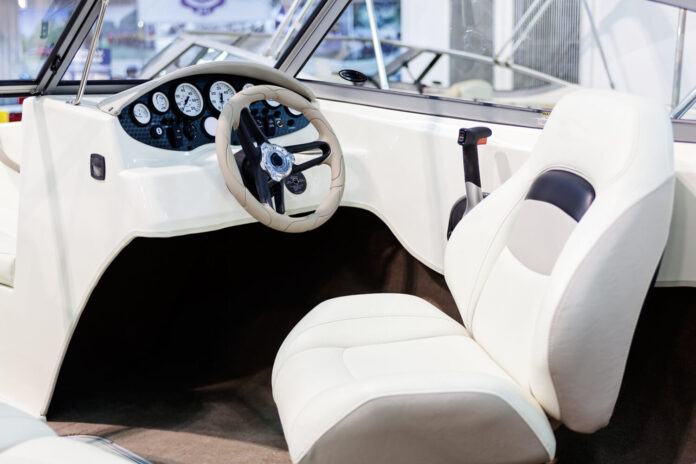
Marine Vinyl: Given its name, marine vinyl is ideal for marine settings: boats, yachts, and waterside furniture. Its resistance to water, UV, and mildew makes it perfect for outdoor furniture, fitness centers, and commercial settings where durability and easy maintenance are crucial.
Leather: Leather is versatile. From luxury car interiors, high-end furniture, fashion items to personal goods, its applications are diverse. It’s best suited for indoor settings or places not exposed to excessive moisture or direct sunlight.
Personalization and Customization
Marine Vinyl: Modern manufacturing techniques allow marine vinyl to be produced in custom colors, patterns, and textures, catering to specific design needs.
Leather: Leather, while available in various finishes, lacks the level of customization marine vinyl offers. However, its natural grain can be seen as a form of personalization, as no two leather pieces are exactly alike.
FAQs
Can I use marine vinyl for indoor furniture?
Absolutely! While marine vinyl is specifically designed to handle outdoor conditions, its durability and ease of maintenance make it a suitable choice for indoor furniture, especially in areas prone to spills or high traffic.
How does marine vinyl respond to cold temperatures?
Marine vinyl is designed to be resilient in a variety of weather conditions, including cold temperatures. However, extremely cold conditions might make it somewhat stiff or less pliable. It’s always a good idea to ensure the marine vinyl is rated for the specific temperature conditions of your region.
How do I repair scratches or cuts on leather upholstery?
Leather can be repaired using specialized leather repair kits available in the market. These kits typically include a filler, adhesive, and colorants to match your leather. For deeper cuts or significant damage, it might be best to consult a professional.
Can I paint or dye marine vinyl to change its color?
Yes, marine vinyl can be painted or dyed using products specifically designed for vinyl. However, it’s crucial to clean the surface thoroughly and possibly use a primer to ensure the paint adheres well. Always test a small, inconspicuous area first.
Is there a vegan or cruelty-free alternative to leather that feels similar?
Yes, there are several vegan leather alternatives available that mimic the feel and appearance of genuine leather. These include materials made from mushrooms (mycelium leather), pineapples (Piñatex), and other plant-based or synthetic sources. Some of these alternatives can be very similar in feel to real leather.
Can leather be waterproofed for outdoor use?
While leather can be treated with water-resistant products to enhance its ability to repel water, it’s not inherently waterproof. Prolonged exposure to moisture can still damage the leather over time. If you wish to use leather outdoors, ensure it’s treated regularly with waterproofing agents and is not exposed to moisture for extended periods.
Final Words
Choosing between marine vinyl and leather is contingent upon your specific needs, aesthetic preferences, budget, and environmental considerations. If you’re leaning towards an outdoor setting, especially in marine environments, marine vinyl may be your best bet.
For a luxurious, comfortable, and timeless appeal, especially in indoor spaces, leather might be the way to go. Whatever your choice, both materials, when sourced and maintained correctly, can offer durability and elegance to elevate any space.

















